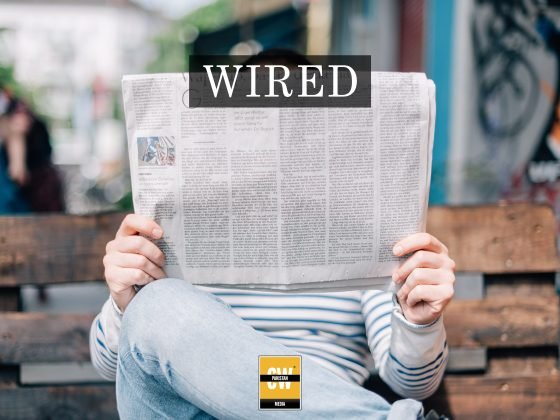Under the Kamyab Pakistan Program, the State Bank of Pakistan (SBP) has implemented a system to provide mark-up and credit loss subsidies to commercial banks acting as wholesale lenders (WLs) and microfinance providers/housing finance companies acting as execution agents (EAs) (KPP).
Commercial banks, as WLs, are urged to submit their claims, as well as the claims of their respective EAs, to the Program Management Unit (PMU) of the Finance Division, Government of Pakistan, within 15 working days of the end of the quarter.
Payment Mechanism for the Kamyab Pakistan Program (KPP):
The Government of Pakistan (GoP) has created the Kamyab Pakistan Program (KPP) to offer small companies, the agriculture sector, and the housing sector with subsidised microloans. Wholesale Lenders (WLs) are commercial banks or Development Financial Institutions (DFIs) that offer liquidity to Executing Agents (EAs), such as Microfinance Providers (MFPs) and Housing Finance Companies (HFCs), for onward lending to borrowers. Microfinance Banks (MFBs), Microfinance Institutions (MFIs), and Rural Support Programs are examples of microfinance providers (RSPs).
The three financial components of the KPP are Kamyab Karobar, (ii) Kamyab Kissan, and (iii) Naya Pakistan Low Cost Housing (NPLCH). MFPs are required to provide finance under all three KPP components, whilst HFCs are only required to provide financing under the NPLCH component.
Payment of the Mark-up Subsidy Mechanism:
As a mark-up subsidy, the government will pay the difference between the “customer rate” and the “bank rate.” The bank rate will be set through a competitive bidding procedure that ensures openness and adherence to the Public Procurement Regulatory Authority (PPRA) Framework in law and spirit.
The bank rate is the WLs rate that the government has approved through a competitive bidding procedure, and it includes both the WLs and EAs spread. Within the authorised bank rate, WLs and EAs will discuss and agree on a rate that covers the EA’s operating costs for KPP financing. The difference between the bank rate and the markup rate charged by EAs from customers will be the markup subsidy claimed by WLs (s). EAs must prepare and submit their subsidy claims to WLs in the normal manner (as the difference between the EA’s operational cost rate agreed with WLs and the customer rate).
In addition, WLs will produce mark-up subsidy claims. External Audit Firms will audit the subsidy claims, and WLs will submit the audited claims to PMU for mark-up subsidy on WLs and EAs’ outstanding normal KPP portfolio.
EAs/WLs must submit audited claims to PMU through WLs within 15 working days of the end of the respective quarter for payment of markup subsidy claims, accompanied with a certificate from an external auditor related to the correctness of markup subsidy calculations.
To assess the default, EAs/WLs must file credit loss claims using standard forms and SBP Prudential Regulations (PR) on Microfinance Banks, i.e. Regulations pertaining to the categorization of a loan in the “Loss” category would be the benchmark for this purpose, which is now 180 days.
Non Banking Finance Companies & Notified Entities Regulations, 2008 of the Securities and Exchange Commission of Pakistan (SECP) would apply to EAs regulated by the SECP. WLs will only be eligible to claim 50 percent Pari-Passu Government Guarantee if their respective EAs declare default or file bankruptcy/insolvency, i.e. WLs must make all reasonable efforts to recover the default amount over and above 10% against each component/scheme from the respective EAs, and the remedy to claim Pari-Passu 50 percent Government Guarantee will only be available to WLs when EAs declare default/file bankruptcy and recovery is no longer possible.
Payment of the Credit Loss Subsidy Mechanism:
EAs are responsible for preparing and submitting credit loss claims to WLs. WLs will also prepare any credit loss claims they may have and schedule an audit with the External Audit Firms in order to submit both claims (EAs and WLs) to PMU for credit loss subsidies on the outstanding principal amount. EAs/WLs must submit audited claims to PMU through WLs within 15 working days of the end of the respective quarter for payment of credit loss subsidy claims, accompanied with a certificate from an external auditor pertaining to the correctness of subsidy and loan loss calculations. PMU would validate the claim within 5 working days before referring it to the Development Finance Support Department (DFSD), SBP Banking Services Corporation (BSC) Head Office Karachi for payment. Each claim will be subjected to a sanity check by DFSD in order to ensure that claim payments are consistent. Within three working days of receiving the claim from PMU, DFSD would notify the SBP BSC Karachi office to debit the GoP’s account and credit the appropriate WL’s account.
External Auditing Firms’ Role:
External Audit Firms on the SBP Panel shall be appointed by WLs to conduct continuing audits of at least 50% of EAs/WLs’ subsidy and loan loss claims. The framework for receiving mark-up and credit loss subsidy claims will be prepared by audit firms for submission to the PMU.
If EA’s credit loss default rate surpasses 10%, or in any other scenario where it is judged essential, PMU may undertake a special audit. The PMU will establish an arbitration procedure to handle disagreements over subsidy levels and guarantee claims, among other things. PMU’s decision will be final in a few days.








